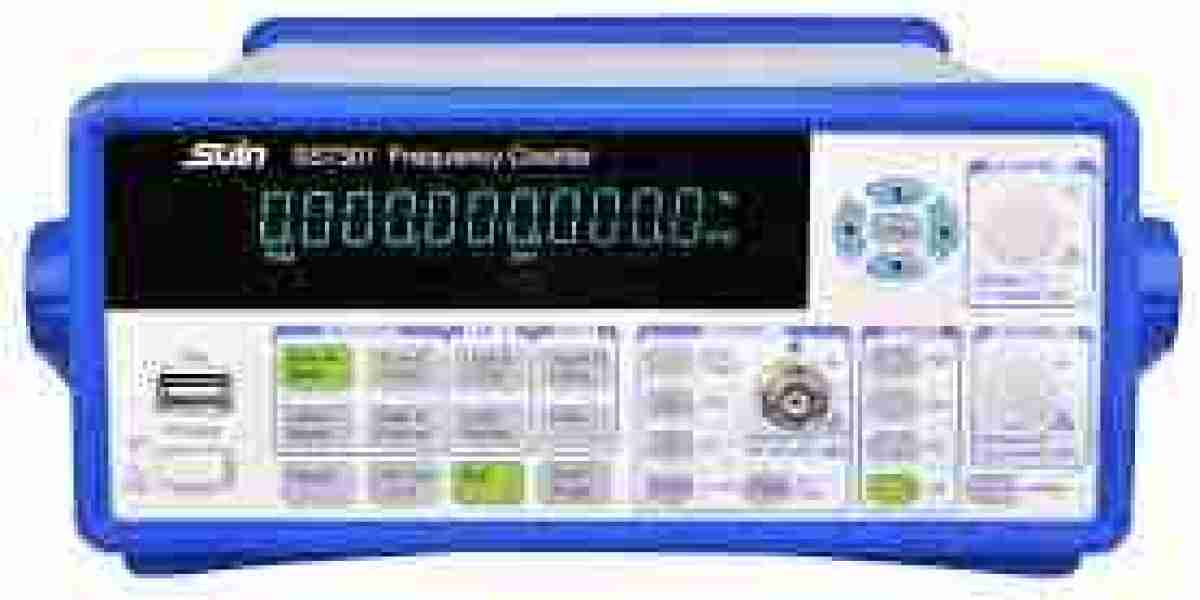The frequency counter market has been undergoing rapid development as industries continue to shift toward high-frequency, digital, and multifunctional electronic systems. With the increasing complexity of electronics in telecommunications, defense, automotive, and industrial automation, frequency counters have evolved from basic instruments to advanced digital tools supporting broad, real-time applications.

Evolution from Analog to Digital Platforms
One of the most notable developments in the frequency counter market is the shift from analog to digital technology. Traditional analog counters, which once dominated the market, are gradually being phased out in favor of digital frequency counters that offer enhanced accuracy, ease of use, and integration with data logging systems. These modern counters can handle higher signal frequencies, offer better noise immunity, and provide real-time data capture — essential in fast-paced testing environments.
Digital counters are now integrated with processors capable of rapid signal analysis, allowing users to capture transient signals and analyze frequency behavior with greater precision than ever before. This development supports applications in 5G networks, aerospace engineering, and semiconductor fabrication.
Product Innovations Focused on Speed and Versatility
Manufacturers are developing frequency counters with wider frequency ranges and faster measurement capabilities. Recent product lines can measure signals from a few hertz up to 40 GHz or more. These high-performance counters are in demand across R&D labs, radiofrequency (RF) design, and radar signal testing.
In addition to extended frequency support, new counters are being built with multifunctionality, combining frequency, time interval, and totalizer measurements into one compact unit. This reduces the need for multiple instruments in testing setups and helps in space-saving and cost-efficiency.
Integration with Automation and Remote Control Systems
The move toward automation in manufacturing and testing environments has pushed frequency counters to evolve with Ethernet, USB, and Wi-Fi connectivity. These features allow users to control the instruments remotely, set up automated test scripts, and transfer data to cloud-based systems or local servers for further analysis.
Such developments are especially beneficial in quality assurance labs and production lines where continuous and repeatable measurements are necessary. Remote operation also enhances safety in environments where human access is limited, such as in aerospace or military testing stations.
Portability and Miniaturization Supporting Field Applications
Another significant development is the rise in demand for portable and handheld frequency counters. Technicians working on remote cell towers, naval radars, or satellite communication installations require compact and battery-operated devices without sacrificing performance.
Leading companies have introduced ruggedized frequency counters that can withstand harsh environments while providing fast and accurate readings. These portable models support field-based calibration and real-time diagnostics, making them invaluable tools for maintenance and installation professionals.
Enhanced User Interfaces and Software Support
Modern frequency counters now feature intuitive touch-screen displays, user-friendly menu navigation, and programmable interfaces. These improvements help operators reduce the learning curve and perform complex measurements more efficiently.
Moreover, software support for frequency counters has grown more robust, enabling seamless integration with data visualization platforms, statistical tools, and automated test equipment (ATE) systems. This software-hardware integration is particularly relevant in sectors where high throughput and quality control are critical.
Development Driven by Industry-Specific Demands
Telecommunications: Development of counters that can measure complex modulated signals used in 5G and LTE systems.
Aerospace & Defense: Precision tools designed for radar, sonar, and communication frequencies under dynamic operating conditions.
Automotive Electronics: High-frequency counters being used in the design of vehicle infotainment systems, ADAS, and in-vehicle networks.
Semiconductors: Ultra-high-frequency measurement devices tailored for chip design, characterization, and signal integrity analysis.
Strategic Collaborations and Product Expansion
Leading market players are investing heavily in R&D to stay ahead. Collaborations between frequency counter manufacturers and universities, defense contractors, and telecom companies are helping to define the next wave of innovations. These partnerships are resulting in:
Development of AI-enabled frequency counters
Customized solutions for niche applications
Expansion into emerging economies with locally compliant instruments
Companies like Keysight Technologies, Rohde & Schwarz, Tektronix, and B&K Precision continue to expand their portfolios, focusing on application-specific models with advanced diagnostics, low power consumption, and long lifecycle support.
Sustainable Design and Long-Term Usability
A notable direction in product development is a focus on energy-efficient components and long-lasting instruments. Manufacturers are adopting low-power processors and recyclable materials, aligning with global sustainability goals. Additionally, modular and upgradeable systems are being promoted to extend product lifespans and reduce electronic waste.
Conclusion
The frequency counter market is evolving rapidly with innovations in digital technology, portability, and intelligent functionality. These developments are enhancing the capabilities of frequency counters across industries and making them more versatile than ever before. As testing and measurement become more critical in an interconnected, high-frequency world, market players that continue to innovate will shape the next generation of performance-driven instruments.




